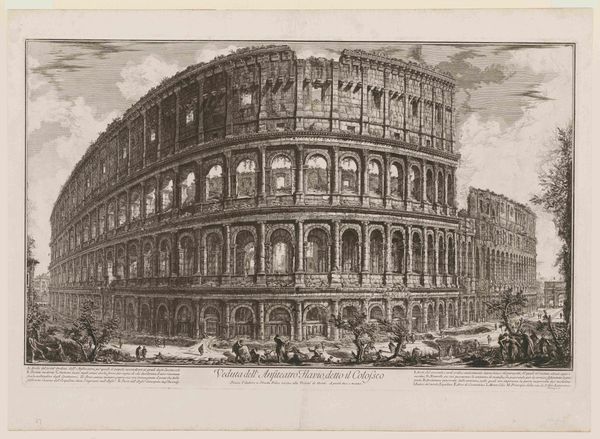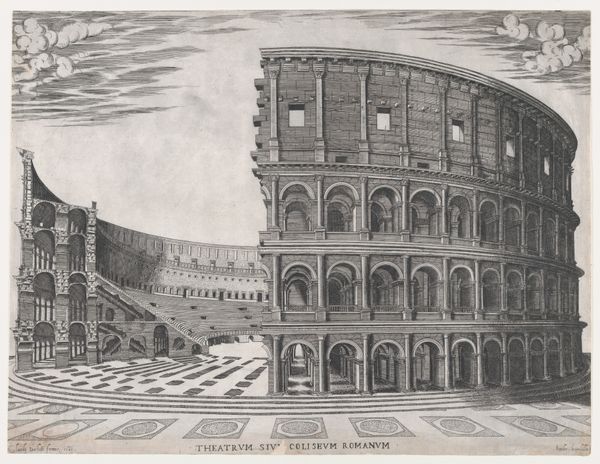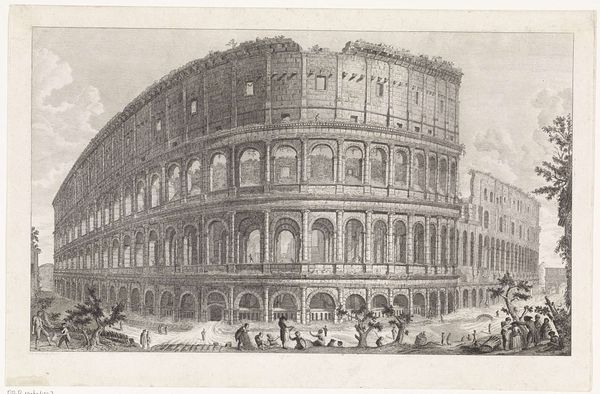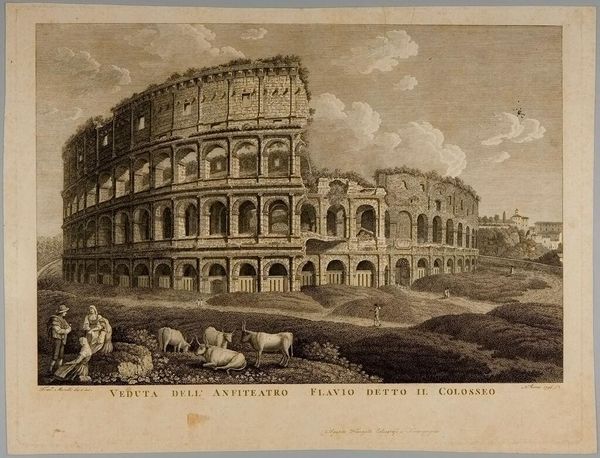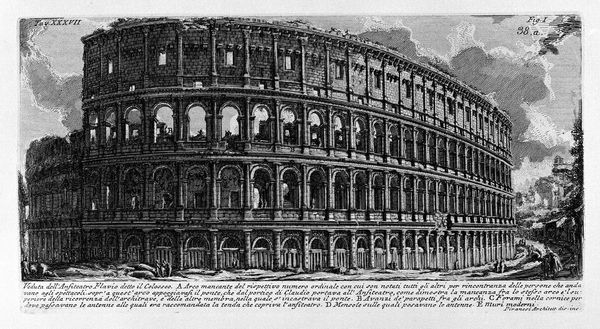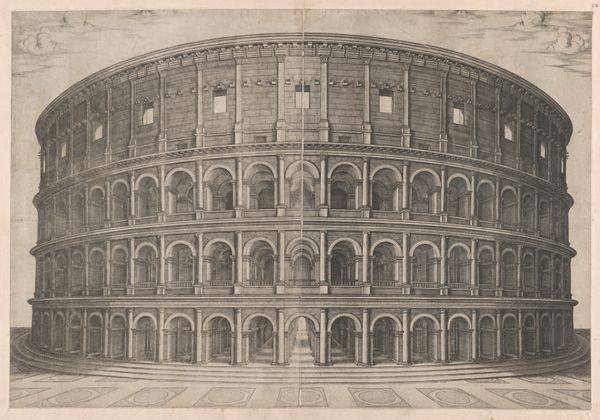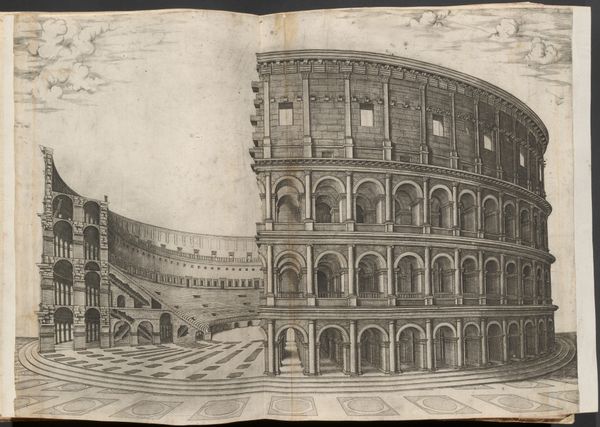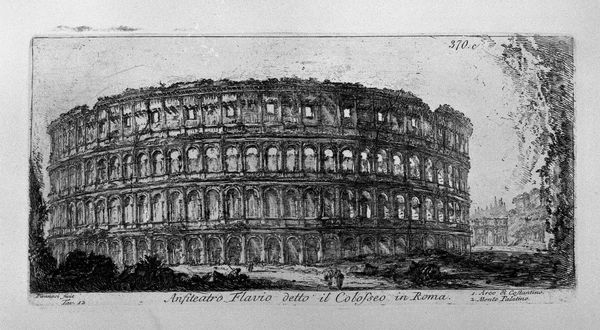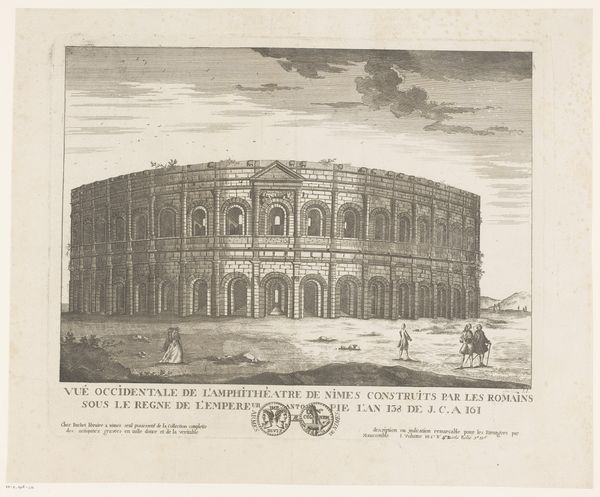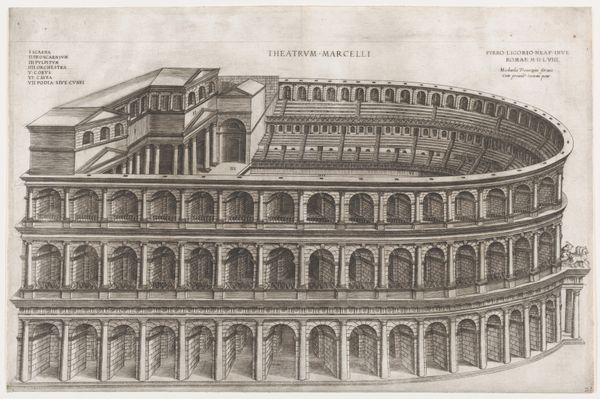
print, etching, engraving, architecture
#
neoclacissism
# print
#
etching
#
landscape
#
cityscape
#
engraving
#
architecture
Dimensions: height 444 mm, width 705 mm
Copyright: Rijks Museum: Open Domain
Giovanni Battista Piranesi etched "Colosseum te Rome," capturing Rome's iconic amphitheater with remarkable detail. The Colosseum itself is laden with symbolic weight, initially designed for gladiatorial contests and public spectacles, reflecting Roman power and engineering prowess. Notice the arches, a recurring motif in Roman architecture, echoing in triumphal arches and aqueducts across the empire. The arch, a symbol of triumph and transition, reappears throughout history in various contexts, from Christian cathedrals to modern bridges. This architectural element, rooted in Roman engineering, evolved to signify not only structural support but also spiritual elevation and the passage from the earthly to the divine. Observe the ruinous state of the Colosseum, a potent symbol of the transience of power and the inevitable decay of even the grandest human endeavors. This imagery touches on the collective memory of fallen empires, engaging viewers on a subconscious level by evoking a sense of melancholy and reflection on mortality. The Colosseum stands as a testament to the cyclical nature of history, reminding us of how symbols resurface, evolve, and take on new meanings across time, continuously engaging with our deepest cultural and psychological layers.
Comments
No comments
Be the first to comment and join the conversation on the ultimate creative platform.
